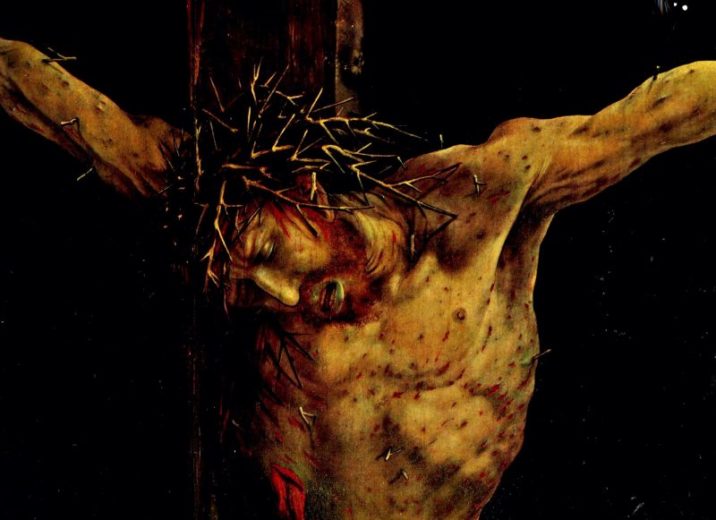The God of the Old Testament wants his enemies’ blood shed for their abominations; the God of the New Testament wants to shed his own blood for his enemies’ abominations. Since the first century, this dilemma has led many Christian (and non-Christian) thinkers to either reject portions of the OT that do not complement with what is revealed in Jesus Christ in the NT, or they put the best possible spin on such violent portraits of God in the OT, justifying his direct and/or indirect actions, regardless of how atrocious and deplorable they might be.

Overview
The work is presented in two volumes. Volume 1 is the state and defend portion; Volume 2 is the application portion. The main thrust of Boyd’s work is to demonstrate how the violent portraits of God in the OT, when interpreted theologically, through a crucifixion-centered hermeneutic, can be seen in a manner that displays the true character of God as revealed on the cross. Such a hermeneutic “gives us a perspective . . . that is superior to what people in the OT had” (xxvi). Applying this lens to the violent portraits of God in the OT will allow us to see that God did not directly or indirectly sanction and carry out actions of divine genocide.
In Volume 1, sub-titled The Cruciform Hermeneutic, Boyd establishes the warrant for his crucifixion-centered hermeneutic, needed to see below the violent divine portraits of the OT. Boyd observes that there is an antithesis between the character of the God revealed in the OT and the character of the God revealed in the NT. This contradiction needs reconciliation without dismissing the God-breathed texts of the OT or by putting a spin on its violent depictions, which only downplay the events rather than reconcile them with Christ as revealed in the NT.

Boyd argues that there are four distinct dimensions to the revelation of the crucified God, shedding light on what lies beneath the violent portraits of God. What we read on the surface of such texts, God commanding violence, below the text, God is actually permitting the violence to occur or withdrawing himself from the situation. The surface-level interpretation is a result of Israel’s fallen condition and misconception of God, viewing him in light of Ancient Near Eastern tribal deities. Accordingly, his people have ignorantly attributed violence to him. But in reading the Bible backwards, a cruciform hermeneutic will reveal what is truly underneath that mask of violence the OT God was wearing.
Another key element of Boyd’s thesis is that of a warfare worldview, which he claims the authors of the Bible had. Behind the natural world there is a cosmic battle—spiritual warfare—between evil and angelic powers that the Church has paid little attention to. These demonic powers have been waging war ever since the beginning of creation, directly impacting and influencing the evil choices and actions of fallen sinners—particularly in seeing other humans as the enemy instead of themselves. But Christ entered the battlefield to destroy the power of such entities, slaying them on the cross. And he did so through remaining sinless, keeping himself free from their oppressive authority. The first Adam and the rest of humanity were unfaithful to God, giving in to the deception of Satan and the fallen powers that be. His death ended Satan’s power over humanity, freeing it from its “Satan-induced blindness and [empowering it] to behold the true glory of God shining in the face of Christ (2 Cor 4:4-6),” so that all humans could “now participate in the faithfulness of the second Adam” (Vol. II, 1065, 1059).
Summary
In reflecting back over the book, three key points line up for Boyd’s cruciformed hermeneutic. He has demonstrated 1) the centrality of Christ in the Bible and how it not only points to Christ, it points to a crucified Christ as the true revelation of God; 2) the need for a conservative principle to maintain proper course for the Church in interpretation; 3) and the surplus meanings to be discovered under the surface of a text through the lens of the crucified Christ. The crucified Christ becomes the key to unlock the sensus plenor of all biblical texts, showing the congruency between both sides of the Bible and a congruency in the nature and character of God even when texts appear, in the letter, to be antithetical to each other.
Boyd’s driving motivation in this work is to establish (or in his mind, recover) a cruciform hermeneutic, revealing the thematic center it has in our canonical interpretation of Scripture. The fallen condition of the people God revealed himself to led him to accommodate to them in such a manner in that he allowed them to project onto himself a wrong conception of “God as a warrior.” They placed a mask of ugliness on him, depicting Yahweh as a “god who fights,” covering up the true God—the crucified God in Christ—the non-violent, enemy embracing, self-sacrificial God of the Bible.
I do have some reservations, particularly of Boyd’s views of accommodation and revelation. These, I believe, present a serious obstacle for many readers to overcome, if Boyd wants them to embrace his hermeneutic as a biblically viable option. The real question is whether Boyd is able to surmount such critical hurdles and satisfy his claim of hermeneutical superiority. That decision I will leave to readers of his work who take the plunge into volume 2, where Boyd works through numerous examples from the OT itself putting his cruciformed hermeneutic to the test.






